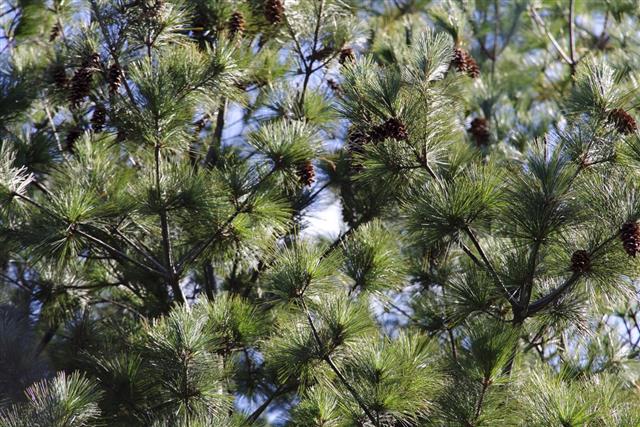
A popular pine for landscaping and making a bonsai, the Japanese pine tree with its unusual shape and foliage colors can add a twist to the garden or home decor.
The Japanese pine tree, belongs to the genus Pinus from the Pinaceae family. Native to Japan, as the name suggests, this member of the pine family can be found in other South East Asian countries, like Korea and China, and some southern parts of Russia. Being a popular ornamental tree, it comes in some popular varieties, namely, the black, white, and the red pine tree.
Japanese Black Pine Tree
The black pine is botanically known as Pinus thunbergii and is called so because of dark, almost black-colored bark found on mature trees. It can grow up to 40 meters in height in suitable conditions only. An irregular pyramidal tree, its lustrous dark green foliage or needles persist on it for nearly three to four years, before shedding. A fast grower, it achieves its optimal height in full sun, and when planted in acidic, rich, moist soils with a pH range of 5 to 6.5.
Although highly tolerant of heat, drought, and strong winds, this tree is susceptible to frost and temperatures below -10°F. It is pest-resistant, but its decline in popularity is caused by soil-borne, root feeding nematodes that make it susceptible to clots.
Japanese White Pine Tree
A striking tree, the Japanese white pine, known as Pinus parviflora scientifically, is a medium-sized grower; 25 to 50 feet. It has a pyramidal-shaped spreading with a crown spread of 25 to 50 feet, depending upon the height of the tree. It is usually trained within a single leader system, and then allowed to branch when the stem caliper is about a couple of feet and leafless.
It has a lighter-colored thinner bark, as compared to other pines. It grows in full sun and prefers well-drained, loamy soil that is slightly acidic. It is moderately drought-resistant. Its wood is weak, and tends to break. Hence, it is a good choice to prune young trees to establish a strong structure.
Japanese Red Pine Tree
A multi branching tree, the Japanese red pine is also known as Pinus densiflora. It reaches a height and spread of 30 to 50 feet with an equal crown spread. It can be trained with multiple trunks, upright, or with a single showy trunk. It prefers a location with full sun and a slightly acidic and well-drained soil.
The young bark peels in thin scales to expose a reddish color, but as the tree matures the bark becomes gray. There are a few pests that attack this tree, but the list of pine tree diseases is generally long; needle blight, rusts, Canker diseases, etc. This tree is widely cultivated in Japan, for both timber and ornamentation. It is a regular feature in the classic Japanese gardens.
Caring for these pines begin with growing trees from pine cones, not only as medium to large landscaping trees, but also as bonsai, or miniature ones grown in large garden containers. Adequate watering, pruning, fertilizing, and keeping an eye for pests and diseases are essential for proper care.


